

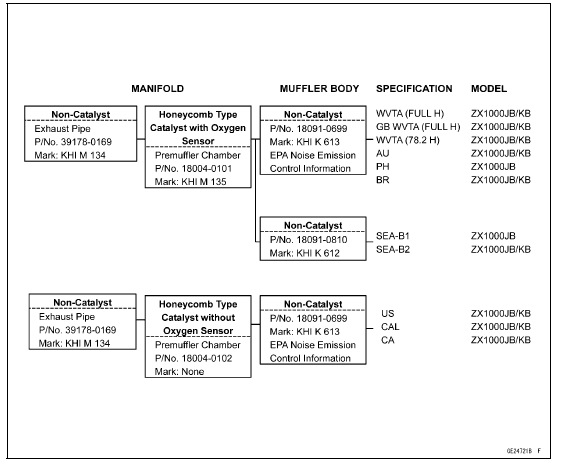

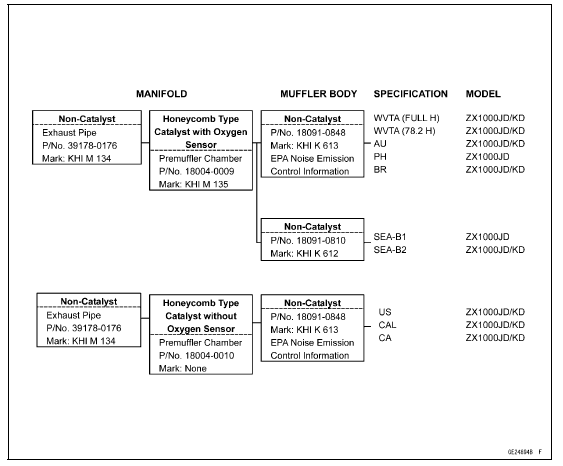
Exhaust Pipe Mark Position [A]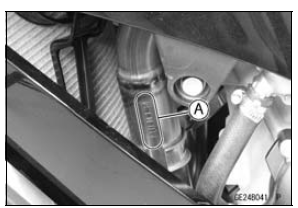
Premuffler Chamber Mark Position [A]
Muffler Body Mark Position [A] 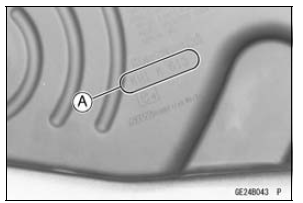
Premuffler Chamber [A] with Hole [B] for Oxygen Sensor [C]
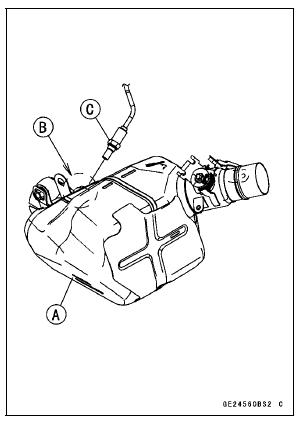
Honeycomb Type Catalyst Position [A]
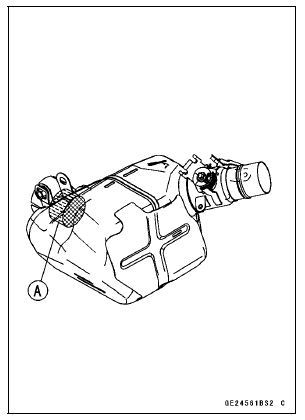
Specifications
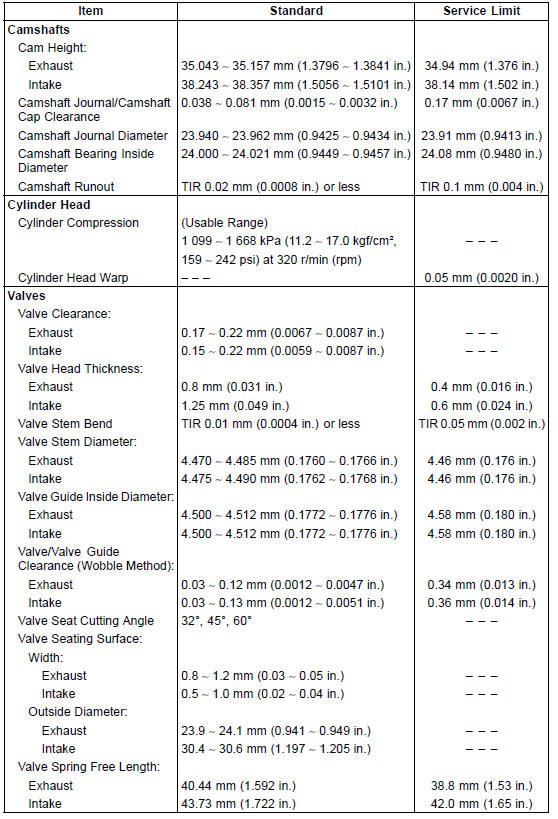
 Exploded View
Exploded View Special Tools and Sealant
Special Tools and SealantSwingarm Removal
Remove:
Rear Wheel (see Rear Wheel Removal in the
Wheels/Tires chapter)
Mud Guard with Rear Brake Hose (see Mud Guard Removal
in the Frame chapter)
Rocker Arm (see Rocker Arm Removal)
Remove:
Brake Hose Clamp Bolt [A]
Unscrew the swingarm pivot shaft nut [A].
Usi ...
Front Caliper Removal
Remove:
Bolt [A]
Front Wheel Rotation Sensor [B]
Loosen the banjo bolt [C] at the brake hose lower end,
and tighten it loosely.
Unscrew the caliper mounting bolts [D], and detach the
caliper [E] from the disc.
NOTICE
Do not loosen the caliper assembly bolts [F]. Take
out only ...
Canister Inspection
Refer to the Evaporative Emission Control System Inspection
(CAL and SEA-B1 Models) in the Periodic Maintenance
chapter.
1. Green Hoses (Purge)
2. Fittings
3. Canister
4. White Hose (Vacuum)
5. Throttle Body Assy
6. Fuel Tank
7.Red Hose (Return)
8. Blue Hose (Breather)
9. Brack ...